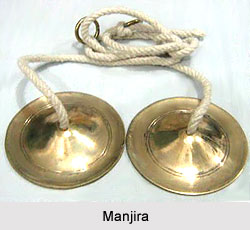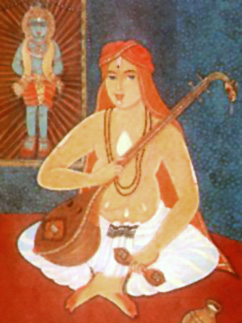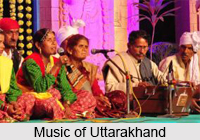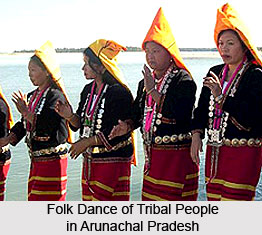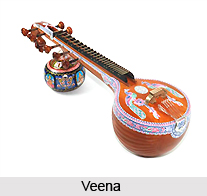 Origin of Veena can be traced back a long way into ancient history. Veena is a most popular string instrument used in South India. In fact it is the oldest musical instrument mentioned in literature. There has been much discussion and disagreement over the instrument called Veena in the Vedic writings (1500-500 B.C.). Loosely translated, the Veena means lute, and the ancient Veena apparently was similar to the instruments used in the ancient Egyptian and Middle Eastern civilizations. It is widely believed that it had a hollow belly covered with a board or stretched leather. The belly was broader towards the back where its end is rounded and tapers toward the front, and it is continued into an upstanding curved arm. The strings are stretched one above the other, from this arm to the belly. These strings vary in their length. This kind of Veena is found, although with minor variations, in the sculptures of the temples at Sanchi, Bhaja, and Bharhut (second to first century B.C.), at Amaravati (first to second century A.D.), at Nagarjunkonda (second to fourth century A.D.), and at other places. It is depicted as being placed on the lap and played either with the fingers or with a plectrum.
Origin of Veena can be traced back a long way into ancient history. Veena is a most popular string instrument used in South India. In fact it is the oldest musical instrument mentioned in literature. There has been much discussion and disagreement over the instrument called Veena in the Vedic writings (1500-500 B.C.). Loosely translated, the Veena means lute, and the ancient Veena apparently was similar to the instruments used in the ancient Egyptian and Middle Eastern civilizations. It is widely believed that it had a hollow belly covered with a board or stretched leather. The belly was broader towards the back where its end is rounded and tapers toward the front, and it is continued into an upstanding curved arm. The strings are stretched one above the other, from this arm to the belly. These strings vary in their length. This kind of Veena is found, although with minor variations, in the sculptures of the temples at Sanchi, Bhaja, and Bharhut (second to first century B.C.), at Amaravati (first to second century A.D.), at Nagarjunkonda (second to fourth century A.D.), and at other places. It is depicted as being placed on the lap and played either with the fingers or with a plectrum.
Some Indian scholars hold that the lute-type Veenas (with a body and a neck) are found as early as the Amaravati and Nagarjunkonda sculptures of the first or second century A.D.Zither-type Veenas (with strings stretching along the entire length of the body) first appear in the Mahabalipuram reliefs of the sixth and seventh centuries A.D., as well as in the paintings of the Ajanta caves (seventh century A.D.) and Ellora caves (eighth to eleventh century A.D.). All of these types of Veenas lacked the frets that are now found on the South Indian Veenas. One of the earliest zither-type Veenas consisted of a long pole called chanda, along which the strings were stretched. Resonance seems to have been provided by partial gourds or hollowed-out gourds, or wooden globes, one towards either end of the danda and attached to its underside.
The ways and means in which the ancient Veena must have been played are open to discussion. Bhasa, a dramatist who flourished sometime in the 5th century AD, mentioned in a play that the Veena was played with the fingernails. According to a modern author, the term Veena as mentioned in the Natyashastra, included all instruments that could be bowed and instruments that were plucked with the fingernails of one hand. Yet another modern author cites the Natyashastra as saying that one type of Veena was played with a plectrum and another type with the fingernails.
Thus, since such diverse sources such as classical literature and Sanskrit treatises mention so many different types of Veena, we can only conclude that the term Veena was a generic one. In all probability, it included instruments which had somewhat different shapes and sizes, different number of strings and different ways of being played. Judging by the different graphic and literary sources, it would seem that the Veena with frets came into vogue sometime in between the tenth and eleventh centuries A.D.
